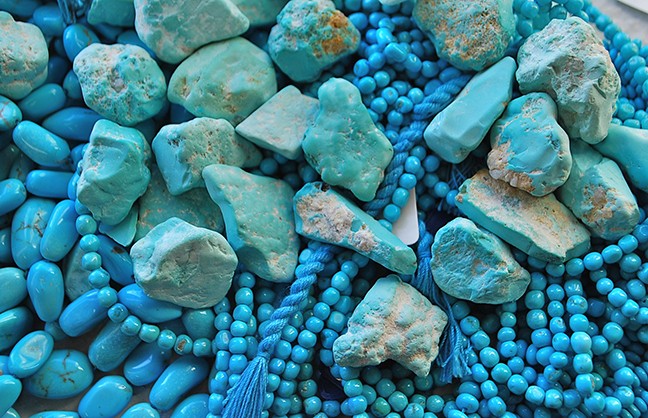Turquoise

Turquoise is a shade of blue that lies on the scale between blue and green. It has characteristics associated with both of these, such as the calmness of blue and the growth that is represented in green. Turquoise can also has the energy that yellow transmits, becoming an uplifting color.
Serenity
Turquoise is similar to aquamarine and has a strong link
to the color of the ocean.
As such, it can be connected to calmness and peace.
Balance
Turquoise is a color that balances blue, green and yellow,
but it also can be linked to emotional balance. Looking at
this color gives a feeling of serenity and stability.
Like blue, it can be associated with clarity of mind and creativity.
Introspection
This is a color that encourages reflection and focusing on one's own needs, thoughts and feelings.
It can be connected to a higher self-esteem and love for oneself. However, it can also be a color related to aloofness and being too self-centered, leading the person to shutting out other people.
Emotional Control
Turquoise is related to serenity, but it can also be related to a focus on the spiritual and the intellectual aspects of the person over emotions.
Turquoise doesn't encourage emotional expression and can transmit neutrality. Too much of it leads to coldness or indifference. Emotional control is important, but a lack of emotion can be dangerous.
Positive and Negative Aspects of Turquoise
Turquoise is a lovely color with both positive and negative associations. It is linked to calmness, serenity and peace of mind, as well as to mental clarity.
Turquoise encourages creativity. It is a color linked to the ocean. It is also associated with balance and emotional stability. Turquoise has the characteristics of blue, green and yellow.
It can also be associated with introspection and emotional control. The negative aspects of turquoise are that it can lead to being self-centered and shutting out other people in favor of oneself. Another negative aspect is an excess of emotional control that can be perceived as indifference.
Previous Article
Blue Color:
Psychology and Meaning
Next Article
Teal
 Color Me Happy
Color Me Happy
 Color Me Happy
Color Me Happy
 Blue
Blue
 Brown
Brown
 Green
Green
 Orange
Orange
 Pink
Pink
 Purple
Purple
 Red
Red
 White
White
 Yellow
Yellow




